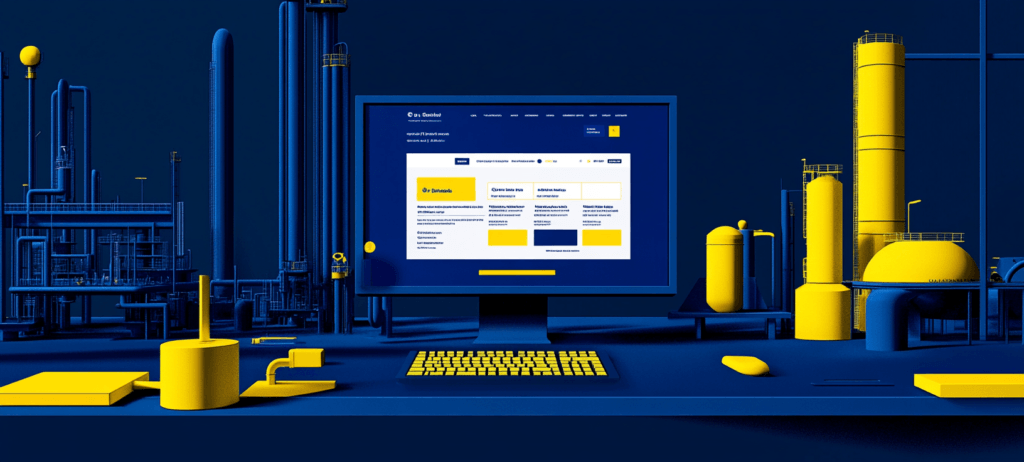-
 7 min. read
7 min. read
-
 Matthew Gibbons
Matthew Gibbons Senior Data & Tech Writer
Senior Data & Tech Writer
- Matthew is a marketing expert focusing on the SEO & martech spaces. He has written over 500 marketing guides and video scripts for the WebFX YouTube channel. When he’s not striving to put out some fresh blog posts and articles, he’s usually fueling his Tolkien obsession or working on miscellaneous creative projects.
When running marketing campaigns, you want to drive conversions. When you launch paid ads and blog posts, you have to analyze various metrics to see the success of your efforts.
One of the most useful metrics for measuring the performance of your marketing is conversion rate, which lets you see how many of the people you reach complete a desired action. There are multiple conversion rate metrics you can track to see if you’re reaching your goals, including:
- Click-Through Rate (CTR)
- Cost Per Conversion (CPC)
- Return On Investment (ROI)
- New Visitor Conversion Rate
- Returning Visitor Conversion Rate
- Average Time On Site
- Bounce Rate
Below, we’re going to discuss the conversion metrics you can track, so read on to learn more. Then, to learn more about conversion rate metrics and other digital marketing topics, subscribe to Revenue Weekly!
Your world-class, tech-enabled marketing agency with over 1.6 million hours of combined expertise.Meet WebFX:

What is conversion rate?
Conversion rate is a measurement of how many users complete a desired action relative to how many people you reach with your marketing. On your website, that means conversions relative to site visitors; in paid advertising, it means conversions relative to how many people click on your ads.
Why is conversion rate important?
Conversion rate is extremely useful for seeing how many people complete the action you want them to do.
7 conversion rate metrics to track
Want to see what conversion rate metrics to track? Below, we’ll cover several conversion metrics that can help you gain more insight into your campaigns. You can also check out our list of handy conversion tracking tools. The metrics we’ll look at are:
- Click-Through Rate (CTR)
- Cost Per Conversion (CPC)
- Return On Investment (ROI)
- New Visitor Conversion Rate
- Returning Visitor Conversion Rate
- Average Time On Site
- Bounce Rate
Let’s dive into each term in more depth below!
1. Click-through rate (CTR)
One of the first conversion rate metrics to look at is click-through rate (CTR). CTR measures clicks — specifically, how many people click on links to your site when they encounter them. You can use CTR in email campaigns, paid advertising, or organic search.

Bear in mind that CTR isn’t just about how many people visit your site. It’s about how many people click links to your site relative to how many people saw those links in the first place. So, for an email campaign, it would be relative to the number of people who opened your email.
Tracking your CTR gives you insight into how effective your off-site marketing is at drawing people back to your website.
2. Cost per conversion (CPC)
Cost per conversion (CPC) measures how much you pay for each conversion.
Let’s say you run a paid search ad for a month. If you wanted to know that ad’s CPC, you would first figure out the total amount you spent on the ad. Then you would divide it by the number of conversions that ad drove.
CPC is a great way to figure out which marketing materials are worth running and which ones are costing you more money than they’re worth. Two different ads might drive the same amount of conversions, but if one costs more than the other, the CPCs will differ.
3. Return on investment (ROI)
Return on investment (ROI) looks at how much you’re making back from the campaigns you run.
If you wanted to measure the ROI of an email marketing campaign, you would look at how much revenue it’s generated for you, and then subtract the amount you spent on the campaign.
Naturally, you want your ROI to be a positive number because it indicates you’re spending less on your marketing and getting more revenue in return. A negative ROI means you’re losing money on the campaign, which tells you it’s time to put it on pause or adjust the campaign.
4. New visitor conversion rate
New visitor conversion rate looks specifically at first-time visitors to your site.
When it comes to purchases, new visitor conversion rate doesn’t tend to be very high. After all, first-time visitors are the least likely people to buy — in most cases, they’ll need to take the time to familiarize themselves with your brand before buying anything from you.
But not all conversions are purchases. If you’re looking at something like email signups, this metric can be very useful, helping you see how effective your website is on a first impression.
5. Returning visitor conversion rate
On the flip side from new visitor conversion rate is returning visitor conversion rate. As the name makes clear, this metric looks at the conversion rate amongst site visitors who visited your website previously.
In terms of purchases, you can expect this metric to be higher than your new visitor conversion rate. If for some reason it’s just as low, that indicates a problem somewhere on your site.
It’s useful to separate the two metrics because when you combine them, you might end up with a distorted view of your conversion rate. It may be that among returning visitors, you’re driving tons of conversions, but combining it with new visitor metrics could skew it toward the low end.
6. Average time on site
Another valuable metric to look at is average time on site. This metric looks at how long the average user stays on your site from the time they arrive, and it’s handy to view it alongside conversion rate.
This metric gives you an indication of how quickly people convert.
If you have a high conversion rate but a low average time on site, that means you’re providing enough information to converting users. A high conversion rate and high time on site means users may be spending more time reading up on your product or service to decide if it’s right.
And if both are low, that means users are leaving quickly without converting, so you may need to make adjustments to keep users on your website.
7. Bounce rate
Leading off the end of the previous metric, it’s useful to know how many of your site visitors stay on your site. Some people may visit a page they find in Google, quickly realize it doesn’t have what they want, and leave without even so much as scrolling.
Your bounce rate is the metric that looks at this behavior. A high bounce rate means a lot of people are abandoning your site as soon as they arrive, while a low bounce rate means people are sticking around.
If lots of people are bouncing, it usually means that either your content isn’t what they want or your pages are taking too long to load. You may need to adjust your website to deliver a better experience and see better results with your conversion rate marketing.
Of course, bounce rate could also indicate that people find what they need quickly and then leave — you’ll have to determine that based on context.
WebFX can help you track your conversion metrics
Need help kicking your conversion rate marketing into gear? Let WebFX take the wheel! We have over 29 years of experience with digital marketing, giving us everything we need to take your campaigns to new heights.
With our conversion rate optimization (CRO) services, you’ll get help improving each of the conversion metrics listed above and more. You’ll also receive a dedicated account representative to serve as your anchor point on everything we do for you.
To get started with us, just call 888-601-5359 or contact us online today!
-
 Matthew is a marketing expert focusing on the SEO & martech spaces. He has written over 500 marketing guides and video scripts for the WebFX YouTube channel. When he’s not striving to put out some fresh blog posts and articles, he’s usually fueling his Tolkien obsession or working on miscellaneous creative projects.
Matthew is a marketing expert focusing on the SEO & martech spaces. He has written over 500 marketing guides and video scripts for the WebFX YouTube channel. When he’s not striving to put out some fresh blog posts and articles, he’s usually fueling his Tolkien obsession or working on miscellaneous creative projects. -

WebFX is a full-service marketing agency with 1,100+ client reviews and a 4.9-star rating on Clutch! Find out how our expert team and revenue-accelerating tech can drive results for you! Learn more
Try our free Marketing Calculator
Craft a tailored online marketing strategy! Utilize our free Internet marketing calculator for a custom plan based on your location, reach, timeframe, and budget.
Plan Your Marketing Budget
Table of Contents
- What is conversion rate?
- Why is conversion rate important?
- 7 conversion rate metrics to track
- 1. Click-through rate (CTR)
- 2. Cost per conversion (CPC)
- 3. Return on investment (ROI)
- 4. New visitor conversion rate
- 5. Returning visitor conversion rate
- 6. Average time on site
- 7. Bounce rate
- WebFX can help you track your conversion metrics

Proven Marketing Strategies

Proven Marketing Strategies
Try our free Marketing Calculator
Craft a tailored online marketing strategy! Utilize our free Internet marketing calculator for a custom plan based on your location, reach, timeframe, and budget.
Plan Your Marketing Budget
What to read next





